Last Updated on August 26, 2022
Every disc braking system relies on brake pads to create the necessary friction needed to slow down the vehicle. The brake pads are positioned within your brake calipers.
Whenever you step on the brake pedal to slow the vehicle down, the brake pads will press against the spinning disc brake rotors and create friction. The friction material on the front of the brake pads is made to be used up over time. In most circumstances, the brake pads will wear down evenly on both sides of the vehicle no matter what type of brake pad you use.
However, there are situations where the brake pads may wear unevenly on each side. A lot of car owners get confused about this and are unsure why this happens.
Whenever you have uneven brake pads in your vehicle, you will be forced to replace all the brake pads at the same time. This can be an unnecessary expense since you’ll end up replacing pads which are still good and not completely worn out yet.
But you will need to do this because your vehicle must have brake pads which are equally worn. Otherwise, it could jeopardize the dynamics of your braking system and could possibly cause problems with braking itself.
See also: Best Brake Pads for Your Car, Truck, or SUV
Top 6 Reasons for Brake Pads Wearing Unevenly
Below are six of the most common reasons for brake pads to wear out unevenly on each side of the vehicle.
Related: 7 Reasons Your Car Pulls to the Right or Left When Braking
#1 – Rotor Thickness Variation
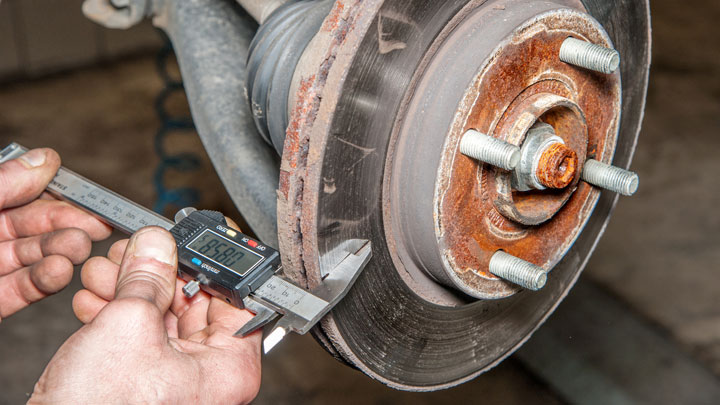
Disc thickness variation is a mechanical term which refers to when the rotors of a vehicle have different levels of thickness. Whenever there is a variation in the thickness level of your rotors, it will cause the brake pads to get worn out faster.
The rotors will have more flat spots that the brake pads will come in contact with. Once they do, the wear of the brake pads will become uneven on that corner of the vehicle.
#2 – Sticky Caliper Pistons
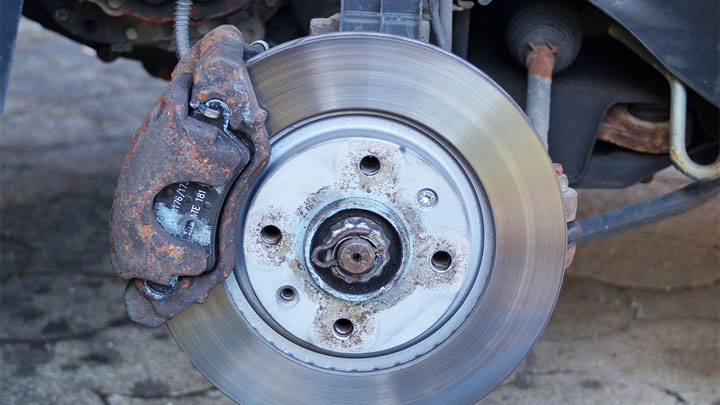
If you some debris or rust on one or more of your pistons, then it can cause sticky brake calipers. This means that the piston won’t slide correctly, causing the brake pad to make constant contact with its corresponding rotor.
A stuck brake caliper will cause the brake pad material to be used up much quicker than the others.
#3 – Misalignment
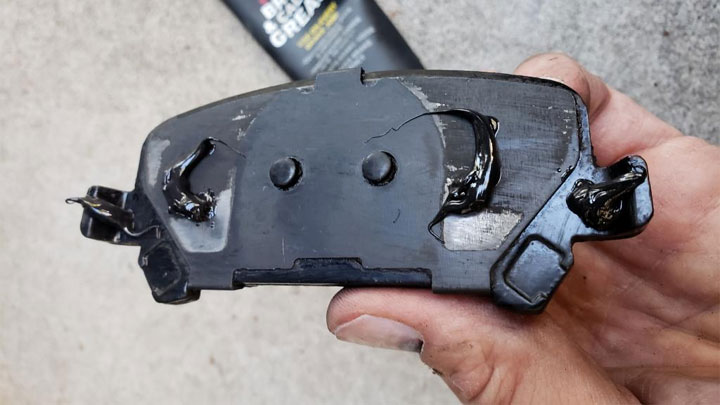
Sometimes when you have new brake pads installed in your vehicle, the mechanic might not align them evenly, sometimes due to a bent bracket on the back of the pad. Anytime you have misaligned brake pads, it will cause them to wear unevenly throughout the course of your braking activities.
You should notice this problem occurring within a few days of getting new brake pads that are misaligned. Once you start experiencing braking issues, you will wonder why your brake pads are acting up already when you just got them replaced.
Well, it is due to the brake pads wearing out unevenly because they are not aligned correctly in the caliper.
#4 – Dirty or Rusty Rotors
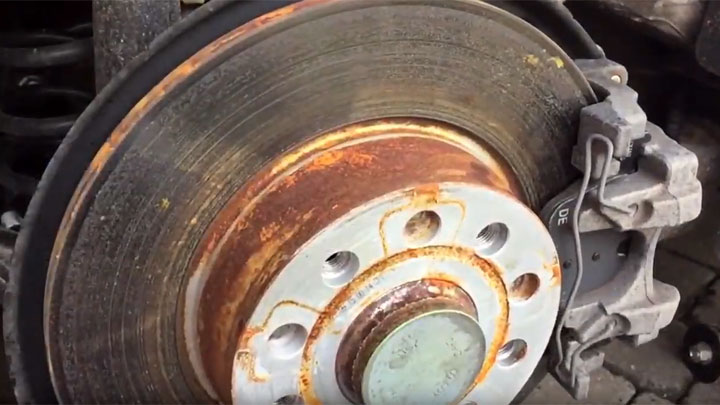
Dirty rotors are certainly one possible cause of uneven wear and tear of your brake pads. These do not need to be old rotors either.
Sometimes when new rotors are installed in a vehicle, they might still have dirt or grease on them from the install procedure. The rotors need to be cleaned with a formulated brake cleaner to ensure this debris is removed from them.
When you buy new rotors, they often come with a gray paint-like coating for the purpose of rust protection. While it’s ok to use brake cleaner to take remove it, it’s not necessary. Normal brake operation will remove that coating as the pads contact the rotor.
#5 – Warped Rotors
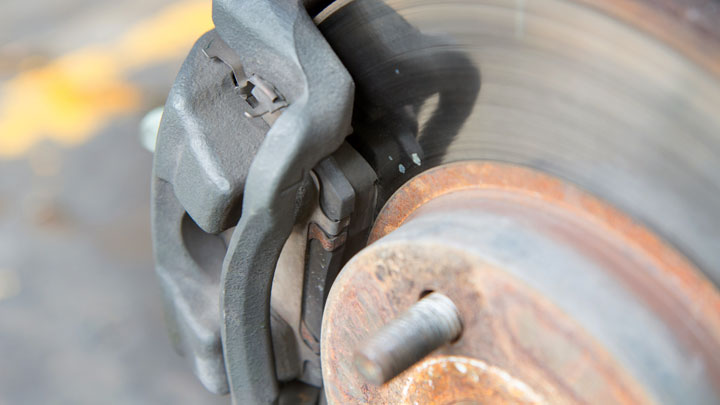
A warped rotor means that the surface of it is not perfectly smooth, but slightly deformed or wavy. This usually happens when cold water makes contact with a scorching hot rotor.
When you have a warped rotor, the brake pad only makes contact with the high points of the rotor while the other pads make full contact. This results in uneven pad wear.
This is why you should never immediately spray water on your wheels and start washing your car immediately after some spirited driving. You want to make sure the rotors have been given enough time to cool down so they are simply warm to the touch and not hot.
To confirm, simply place your hand a few inches from the rotor. If you feel a lot of heat, wait a few minutes before using water.
#6 – Different Types of Brake Pads
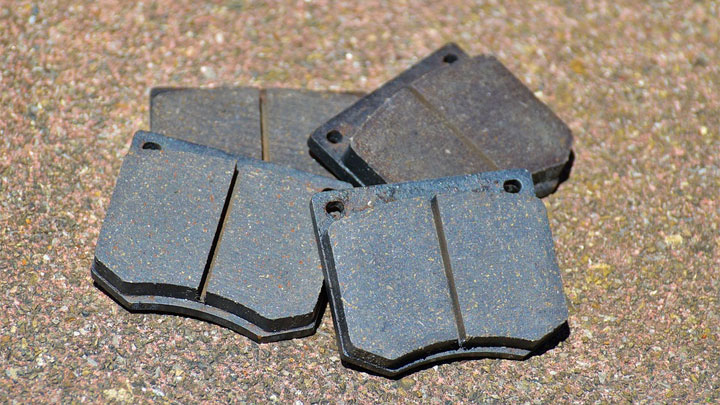
It is important that you stay consistent with the type of brake pads that you install in your braking system. Do not use different brands or materials of brake pads because they are likely going to wear down at different rates and have a completely different lifespan.
If you stay with the same model and thickness in your brake pads, then you will have a better chance of them wearing evenly.

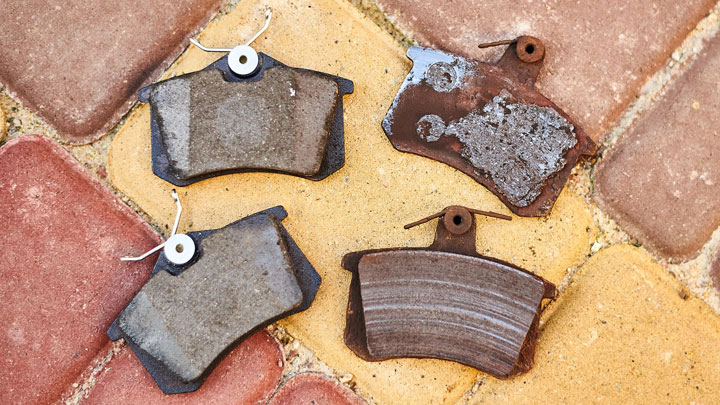

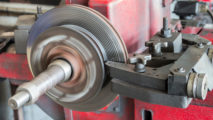
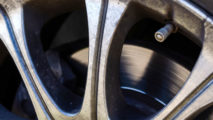
amazing info thank you
I renewed the front brake discs and pads on my BMW X3 I now find after a few months that only half the pads seem to be in contact with the discs, that is the top half of the discs the bottom halves are quite rusty, why would this happen, my car is only three years old and done 22000 miles
I’m not sure. If it were my car I’d pull the brakes on that side and inspect them. I would be curious to know if the wear on the inside pad looks like what you’re seeing on the outside, or perhaps the opposite wear pattern.
Replaced 2 rear calipers and pads.right caliper has chomped thru 1 brake pad within a month. Any ideas
Sounds like that caliper may be sticking. It may be an issue with the brake line on that side, or that caliper may need a rebuild.
Typically instead of rebuilding the caliper yourself, people just swap calipers for another remanufactured one. You may be able to find an OEM replacement instead of a remanufactured caliper if you search for one online.
Pull the caliper off and inspect how tight the pads are held in place.
They should be able to move fairly freely, unless the shins are specially designed to hold them in place.
If they’re too tight, pull the shims off, and file beneath the shims to remove any corrosion that has built up.
Next, check the slide pins (if equipped) to make sure they move freely. Add brake pad lube as needed (not anti-seize!)
If all those are free from issue, I’d suspect the caliper if it has multiple pistons.
Your post doesn’t clarify well how the pad is wearing unevenly, top to bottom (outside of rotor to inside of rotor), or left to right (side to side of pad). But there are very few moving parts that go into brakes…
If you ever solved the concern, please let us know!!
1. Correct
2. Can be bad pistons, but more often than not, it’s sticking caliper pins, which can be easily corrected. Use something me valve lapping compound and an impact gun in the pin hole, spin at high speed for 30 seconds, CLEAN THOROUGHLY, and grease well with pad/slide grease, not anti-seize, which is sticky…
3. How do you “misalign” pads? They only go in one way, even if they’re not pushed in all the way, the caliper will push them flush, unless they’re not in correctly at all.
4. Brake rotors don’t need to be cleaned with a specialized formula. We all use brake parts cleaner, but your ASE certification should teach you that the proper way to clean off the shipping anti rust oil on rotors is with soap and warm water, not with Brake Clean…
Also, where would you apply an anti-rust coating? The surface that makes contact with the pads has constant friction on it, it would wear off any coating, plus a coating would prevent the pads from making proper contact with the rotor, harming braking performance. Any rust on the perimeter won’t make any difference to brake performance…
5. The water part of this is accurate enough for the average reader…
Warped rotors can definitely effect pad wear, you’ll usually notice it when braking from speed, a pulsation in brake pedal and/or steering wheel specifically when braking…
6. 100%, do not mix pad material/manufacturer per axle (different on front and rear is ok, but will wear at different rates in respect to each other)
7. Corrosion buildup on brake hanger (where pads slide), causing binding and preventing movement
8. Wearing/degrading brake hoses, allowing pressure to enter and not leave the caliper, though this is usually more notable when brakes are wearing excessively on one side.
Hey Ben, thanks for the comment. To clarify #3, brake pads are supposed to be only installable in one direction. However, if the installer is not paying attention, they could install the pads with the backing plate facing the rotor (in other words, on the wrong side of the caliper). Obviously the installer *should* notice this error very quickly when they go for a test drive.
Thanks for #7 and #8. Those are good tips to include.
Just pulled my brakes off and one pad is almost new the other is worn right down. They are new calipers that came with brake pads already. The one that looks like it has lots of life feels really tight, I can barely move it. It should really move freely.
I guess when you buy them new you should always check to see if there in snug or just jammed in there which appears that’s what they are. So I’m going to replace them with new pads I’ll have a spare one for some other time but I’ll have to file it down so it will sit in snug and almost free.
One pad is worn substantially more than the other on the same caliper?